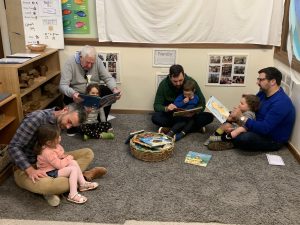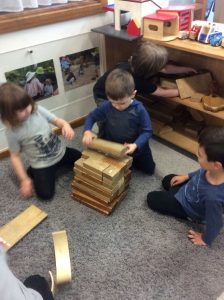Bread. It’s a simple household staple, but one that has a rich history and has been enjoyed for thousands of years by a variety of cultures around the world. Long bread, flat bread, round bread, square bread. You can eat it for breakfast, lunch, use it to eat your vegetables for dinner, or for a sweet and tasty snack. In Room 34 this term we have been learning about bread and how it is enjoyed in a range of different ways, shapes and forms in various countries around the world.
Our bread project began following an interest that emerged from the children’s Summer holiday program. We read the book Bread, Bread, Bread by Ann Moris, which explores different types of bread around the world. Children and educators then shared the different types of bread they enjoy at home with their families. We quickly learnt that there were a range of different types of bread enjoyed within our group. We discovered that flat bread was a popular choice amongst our group, and so we decided to have a go at making our own!


The bread making process was a lot of fun and involved some great sensory learning as the children used their different senses throughout the learning experience. They used their eyes to watch the different wet and dry ingredients combine and form into the dough. They used their hands to knead the dough and then described how it felt:
“Now it’s wet”, said one child. “It feels like playdough”, said another. “It’s sticky”, three others agreed.
Some children smelled the dough. One said “it smells like garlic bread”, while another thought “it smells like flour”.
We then used our hands to roll the bread into a ball before flattening it out and placing it in the oven to cook. Once cooked, we then enjoyed the bread for afternoon tea with some hummus and guacamole prepared by our chef Julie. With not a single piece left over, we think the verdict was clear!


The following week Julie brought in an enormous zucchini! After the children did some drawings of the zucchini and used their estimating skills to guess how long it was, we incorporated it into our bread project and made zucchini bread! This recipe was very different and was more like a cake batter. Two of our friends observed how the mixture was “sticky” and smelt “like honey”.

The next week we explored the history of bread within the Australian context as we learnt how damper bread was made by our Indigenous ancestors. We looked at photos and a video of damper being made on a campfire. We then had a go at making our own!

The learning in our bread project has been multifaceted. At Halifax Street, food plays a very important role in our everyday learning, with the centre having developed a curriculum of taste as part of its research of the Reggio Emilia Approach to Early Learning within our South Australian context. Diversity and Interdepedence, Identity and Communication are key areas of the curriculum, and through this food based project the children have been able to learn about their world and how bread comes in many different shapes and forms. We have also been able to learn more about each other and share and celebrate our own identities by talking about the different types of bread enjoyed by our friends and their families. We also used our senses and descriptive language to observe and learn about the science of bread making. Then lastly, by working together, the children were able to collaborate, create and share enjoyable meals and connect as a group.
Our bread project will continue throughout the term as we will continue to explore other types of breads of the world.





